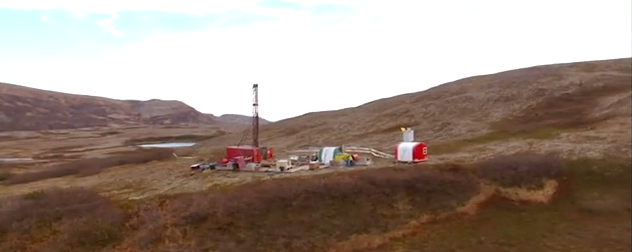Double down: EPA goes after lucrative mine project in second damning report

DRILL IT: PLP has spent the past few years studying the Bristol Bay region in preparation for permitting.
By Dustin Hurst | Northwest Watchdog
When fairness and Mother Earth come to blows, the environment wins every single time.
Or, at least it does for liberals cheering the release of a damning report of a prospective Alaskan gold and copper mine known as the Pebble Mine.
The report, re-released this week after an earlier version was widely panned by subject experts and scholars, essentially says what every leftist wanted to believe about the open-pit Pebble project before the study even began: the mine project will doom local ecosystems, bring on the apocalypse and cause Justin Bieber songs to play on repeat on all the radio stations forever.
OK, not really.
But the report, predicated upon a model mine of the EPA’s own thinking, says the mine could cause irreparable damage to the Bristol Bay ecosystem. Miles and miles of stream would be destroyed, as would thousands and thousands of acres of wetlands, the Environmental Protection Agency revealed in the report.
If the apparatus holding the mine waste fails, the EPA said, the results could be catastrophic for the region, which boasts some of the best salmon fishing in the world.
Of course, the EPA based theses conclusions on hypotheticals, not sound science.
The company behind the project, Pebble Limited Partnership, continues to fight against the report, calling for fairness in the mining process. PLP hasn’t yet submitted its necessary paperwork for permitting, so it repeatedly condemns the EPA for using a hypothetical model to determine how the project could damage the region’s environment.
“It must be remembered that the report does not assess the effects of the Pebble Project as we have not finalized nor submitted a project for regulatory evaluation,” said PLP CEO John Shively in a blistering statement. “The report is based upon a so-called ‘hypothetical mine’ of the EPA’s design.”
In other words, PLP believes the EPA is sacrificing due process and a fair review, all in Mother Earth’s holy name.
Shively criticized previous drafts of the report, one released in May 2012, for not taking into account modern engineering practices, which he promised would be deployed at Pebble.
To be sure, it’s to be entirely expected that Shively and PLP remain suspicious of the report, a document that could doom the project after millions and millions of dollars invested in scientific studies. A less interested party, though, feels similar to Shively and company.
Bob Loeffler, a visiting professor at the University of Alaska and expert of large-mine permitting, remains skeptical of both sides of the controversy. Earlier this year, he told Watchdog.org he is uncertain if PLP can actually build a mine in the region, but he needs to see hard plans. “I don’t know,” he said. “I really cannot know until they come up with a mine design.”
So, what happens now? No one is quite certain. PLP spokesman Mike Heatwole told Watchdog.org Friday that the EPA must issue a formal response to the six federally recognize tribes who initially requested the study.
After that, it’s anyone’s guess. The EPA could use its powers, outlined in section 404(c) of the Clean Water Act, to simply kill the project before it ever hits permitting. Heatwole warned that would represent an “aggressive new path” that would chill the private sector.
In the interim, PLP is looking for a new investor for the project, just months after Anglo-American pulled out. Heatwole said that Northern Dynasty Minerals, now the sole backer of the Pebble venture, will discuss the findings of the EPA report with potential investors who might be spooked by the government overreach.
If the EPA pursues the veto option, Heatwole says PLP would consider sensible legal action, but he said the real fight could exist between Washington, D.C., and Alaska.
For his part, Republican Gov. Sean Parnell is none too happy about the EPA’s report.
“Unfortunately, today’s EPA report comes as no surprise to Alaskans,” Parnell said. “This report is little more than a pretext for an EPA veto of the state’s permitting process, something the federal Clean Water Act prohibits.”
The EPA has not set forth a clear path of action on Pebble. “As a scientific report, this study does not recommend policy or regulatory decisions,” the agency’s press release about the document said.
The entire process, the EPA admitted in July 2013, cost taxpayers more than $2.4 million, a number that has likely risen since the admission.
The post Double down: EPA goes after lucrative mine project in second damning report appeared first on Watchdog.org.







